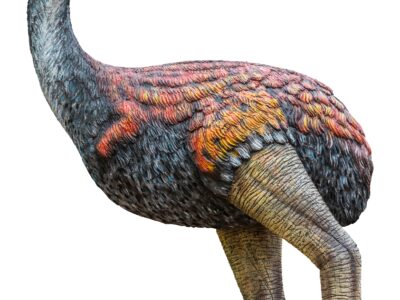Follow the International Union for Conservation of Nature (IUCN) nine categories of endangered species. They are:
1. Extinction (EX) — An extinct species no longer exists. After exhaustive research, scientists around the world agree that no individual of this species exists on Earth. Interestingly, 99% of all species that have appeared on Earth in the past 5 billion years have become extinct. Read more and view the list of extinct species.
2. Extinct in the wild (EW) - Species that only survive in captivity, cultivation, or outside their native range are considered "extinct in the wild." For example, if there are only 10 individuals of a rare bird left, and they all live in a zoo or a nature reserve, the IUCN would classify the species as extinct in the wild. Read more and view the list of extinct species in the wild here.
3. Critically Endangered (CR) —Critically endangered species are on the verge of extinction or extinction in the wild, but have not yet met the criteria for either category. See the list of critically endangered species here .
4. Endangered (EN) —An endangered species has a very high risk of becoming extinct or becoming extinct in the wild. For an animal to be added to this category, it must meet specific criteria regarding population or habitat decline, which you can read about on our Endangered Species List.
5. Vulnerable (VU) — A vulnerable species meets at least one of the five criteria of the Red List. They are considered to be at high risk of anthropogenic extinction if conservationists do not intervene. In order for the IUCN to add a taxon to the Vulnerable list, it must meet specific criteria regarding population or habitat decline. Read more about our Vulnerable Species List here.
6. Near Threatened (NT) —A species is considered “near threatened” when it does not qualify as “critically endangered,” “endangered,” or “vulnerable,” but scientists believe The species will reach one of these levels in the near future. See our list of Near Threatened Species here.
7. Least Concern (LC) —Species in the Least Concern category are not currently facing any population or habitat declines. See the list of species of least concern.
8. Data Deficient (DD) — Data Deficient species lack sufficient information to be correctly classified into one of the above groups. See the list of species for which data are insufficient.
9. Not Evaluated (NE) —This species has not been evaluated for IUCN classification. See the list of unassessed species.

What is the International Union for Conservation of Nature (IUCN)?
The IUCN is an organization that monitors the conservation status of the world's flora and fauna and other ecological indicators. Its mission is to promote the sustainable use of the earth's resources. Founded in 1948 as the Union for the Conservation of Nature in Fontainebleau, France, IUCN is the oldest global environmental advocacy organization. Today, the umbrella organization, headquartered in Gland, Switzerland, works with more than 1,000 small nonprofits, associations and governments representing 140 countries.
How many species are there on Earth?
IUCN monitors the world's species, which begs the question: How many species are there on Earth right now? In 2016, researchers declared their collective belief that there are more than a trillion species currently on Earth. However, scientists have observed and described only one in a thousand of them, or between seven and ten million. The typical lifespan of a species is 10 million years. However, some have survived for hundreds of millions of years. For example, jellyfish have lived on Earth for nearly 550 million years!
What is a taxon?
The IUCN often uses the term "taxon". So what is it? A taxon is a group or groups of species or organisms that form a unit.
What is the Red List?
The International Union for Conservation of Nature is perhaps best known for creating the IUCN Red List of Threatened Species, a detailed record of the world's vulnerable and endangered species. The list, started in 1964, details dangerous taxa of plants and animals divided into several categories.
How many animals are currently endangered?
You may be wondering: How many animals are endangered in 2020, or which animals are endangered? For the latest version of the list, IUCN researchers and scientists evaluated 63,837 species. Of these, 19,817 species are endangered; 3,947 are in the critically endangered category; 5,766 species are listed as endangered, and more than 10,000 species are listed as vulnerable.
What is the Endangered Species Act?
The Endangered Species Act, passed in 1973, is a U.S. federal law that protects threatened and endangered species that are at risk due to “the consequences of economic growth and development that do not receive adequate attention and protection.” The goal of the act is to prevent species extinction and restore species to a point where protection is no longer needed.
animal tags: Endangered Animals
We created this article in conjunction with AI technology, then made sure it was fact-checked and edited by a Animals Top editor.